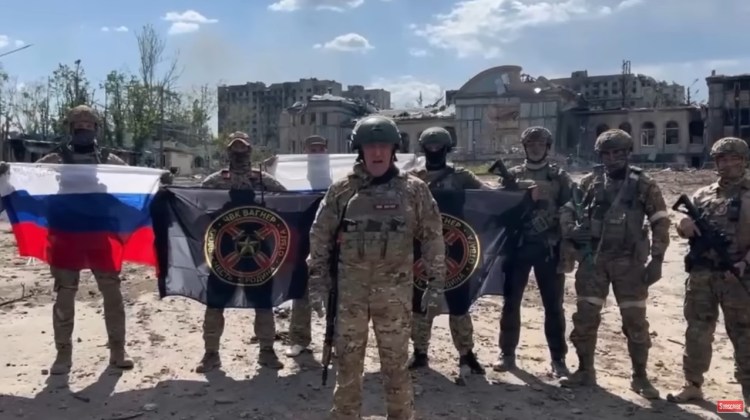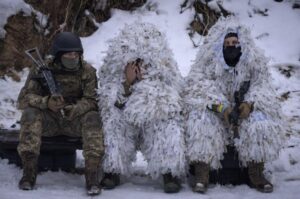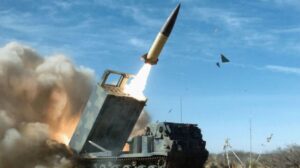Around July 25th, Russia’s private military company, the Wagner Group, faced a major ambush by Tuareg fighters in Northern Mali. Several dozen Wagner mercenaries and their Malian junta allies were killed in the ensuing ambush.
The attack and ambush was Wagner’s single deadliest day since the height of the Battle of Bakhmut against the Ukrainian military and the biggest loss of life for the PMC outside of Ukraine since the Battle of Khasham against US Special Forces.
The Kremlin, which holds the military, mercenaries, and intelligence apparatus under its umbrella, is witnessing the largest loss of Russian military-aged males since World War Two, and the destruction of elite Wagner fighters in Mali could be a sign of exhaustion and overestimation.
Background of Wagner in Mali
Against the backdrop of the 2021 Malian Coup, the military has been in control of the country—running an authoritarian military junta. The junta was anti-West and, knowing it could not last without the backing of a major power, immediately moved to Russian assistance.
The Kremlin dispatched the Wagner Group, which was then still under Yevgeny Prigozhin’s leadership. Immediately after deployment in Mali, the mercenaries helped influence the junta to expel the French military and withdraw the UN-led mission from the country.
The withdrawal of international partners and United Nations peacekeepers would only exacerbate the security issues of Mali as not only does the country face threats from al-Qaeda and ISIS but separatist movements as well.
Around July 25th, Russia’s private military company, the Wagner Group, faced a major ambush by Tuareg fighters in Northern Mali. Several dozen Wagner mercenaries and their Malian junta allies were killed in the ensuing ambush.
The attack and ambush was Wagner’s single deadliest day since the height of the Battle of Bakhmut against the Ukrainian military and the biggest loss of life for the PMC outside of Ukraine since the Battle of Khasham against US Special Forces.
The Kremlin, which holds the military, mercenaries, and intelligence apparatus under its umbrella, is witnessing the largest loss of Russian military-aged males since World War Two, and the destruction of elite Wagner fighters in Mali could be a sign of exhaustion and overestimation.
Background of Wagner in Mali
Against the backdrop of the 2021 Malian Coup, the military has been in control of the country—running an authoritarian military junta. The junta was anti-West and, knowing it could not last without the backing of a major power, immediately moved to Russian assistance.
The Kremlin dispatched the Wagner Group, which was then still under Yevgeny Prigozhin’s leadership. Immediately after deployment in Mali, the mercenaries helped influence the junta to expel the French military and withdraw the UN-led mission from the country.
The withdrawal of international partners and United Nations peacekeepers would only exacerbate the security issues of Mali as not only does the country face threats from al-Qaeda and ISIS but separatist movements as well.
Wagner would help the junta consolidate power in the most brutal ways, such as the Moura Massacre, where the mercenaries and their junta allies killed 300 civilians. In an interview with Le Figaro, a Malian resident stated they live in fear of Wagner as much, if not more, than extremist groups due to their violent nature and history of brutal acts.
In this ghostly image, Wagner boss Yuri Prigozhin points to the dead bodies of his hired mercenaries during a furious rant. Screenshot from YouTube and The Times and Sunday Times
Ambush on Wagner in Tinzaouaten
Helping the junta consolidate authoritarian rule over Mali, Wagner dispatched over one hundred of their mercenaries for an operation alongside the Malian military. The attack’s goal was Tinzaouaten, a town near the Algerian border currently under Azawad Tuareg fighters’ authority.
Around late July 25th into the 26th, a column of Wagner and junta fighters came under fire from Tuareg fighters who visibly downed an MI-8 helicopter along with several infantry fighting vehicles.
Utilizing the punishing geography of the Sahara, the Azawad fighters used sandstorms and heights to catch the Wagner fighters and Malian military detachment in a fishbowl and, for several hours, unloaded their firepower onto them until most were killed. Graphic videos displayed on social media showed dozens of dead—many of which are visibly Russian.
Several survivors of the PMC were also captured. Their fate is unknown for now as the Tuareg fighters could potentially negotiate concessions if the Kremlin were to agree to do so or potentially hand them over to Ukraine or a Western intelligence agency for diplomatic recognition or support against the Russian-backed junta.
On several Russian telegram channels, fellow Wagner members admitted some of the most experienced fighters from prior operations took part in the battle and were killed, such as the popular admin of the PMC’s ‘Grey Zone’ telegram channel that amassed over 500,000 followers.
Wagner/Russian Troops in Bakhmut, Ukraine, 2023 via NYT
Russia’s Imperial Ambitions Leaves its Forces Overextended and Vulnerable
The sudden ambush and destruction of a large contingent of Russian mercenaries only exacerbate the current catastrophic losses Moscow can ill afford as it desperately tries to maintain global influence while fighting to resurrect a dead empire.
Russia’s invasion of Ukraine is already the most costly offensive war Moscow has seen since the disastrous WWI. With 3,000 visually confirmed tank losses, over 500,000 casualties, and one-third of the Black Sea Fleet disabled and destroyed, the Kremlin is forced to make difficult decisions.
Several weeks ago, the Kremlin moved all ships of the Black Sea Fleet away from Crimea—a great humiliation towards Vladimir Putin’s strongman aura as Russia lost a naval front of war to Ukraine, which has no navy. Currently, Russia is spending 1.5% of its overall GDP towards payouts for families of fallen military personnel, and the situation in Africa could exacerbate this.
Last year, Wagner led a short-lived mutiny against the Kremlin composed of some of Russia’s best fighters. Two of Russia’s major victories since the full-scale war came from the Wagner Group in Soledar and Bakhmut.
In the aftermath of the mutiny and assassination of Yevgeny Prigozhin, the Kremlin wished to further consolidate Wagner more closely under the now-rebranded ‘Africa Korps.’ The GRU, one of Russia’s intelligence agencies, is tasked with consolidating Wagner as the black-market illicit trade and income can help the Kremlin evade sanctions.
Russia has already lost influence in the South Caucasus and cannot stop Israeli air raids in Syria. A potential domino effect in Mali with separatist and anti-Junta revolts could spread to other areas.
Losing not only hundreds of thousands of troops in Ukraine is a major issue for the Kremlin, but now losing key fighters in Africa, a continent the Kremlin wanted to rapidly expand its influence in, becomes a major blow.
A Sign of Things to Come?
Currently, there are close to 500,000 Russian troops in Ukraine, and Russia’s Ministry of Defense plans to increase this to 600,000. As seen in the ISIS attacks in Russia, the Kremlin may have overestimated their force projection capabilities while trying to maintain stability at home.
Already bogged down in a perpetual ten-year war that has not yet captured a fully occupied oblast or reached any military objective, the Neo Russian Empire Putin envisioned he would have, akin to Peter the Great, is now rapidly taking heavy losses simultaneously in various regions akin to the last Tsar, Nicholas II. Time will tell if Vladimir Putin’s disastrous imperial ambitions will leave him in the same fate as Nicholas II.
—
Disclaimer: SOFREP utilizes AI for image generation and article research. Occasionally, it’s like handing a chimpanzee the keys to your liquor cabinet. It’s not always perfect and if a mistake is made, we own up to it full stop. In a world where information comes at us in tidal waves, it is an important tool that helps us sift through the brass for live rounds.



